 |
Database Card Entry 7-216
©ICDD 1967 (alternative view with small images) |
 |
Database Card Entry 7-216
©ICDD 1967 (alternative view with small images) |
Database Card Entry 7-216
The content of the various highlighted sections of the physical data card are explained below each image below:
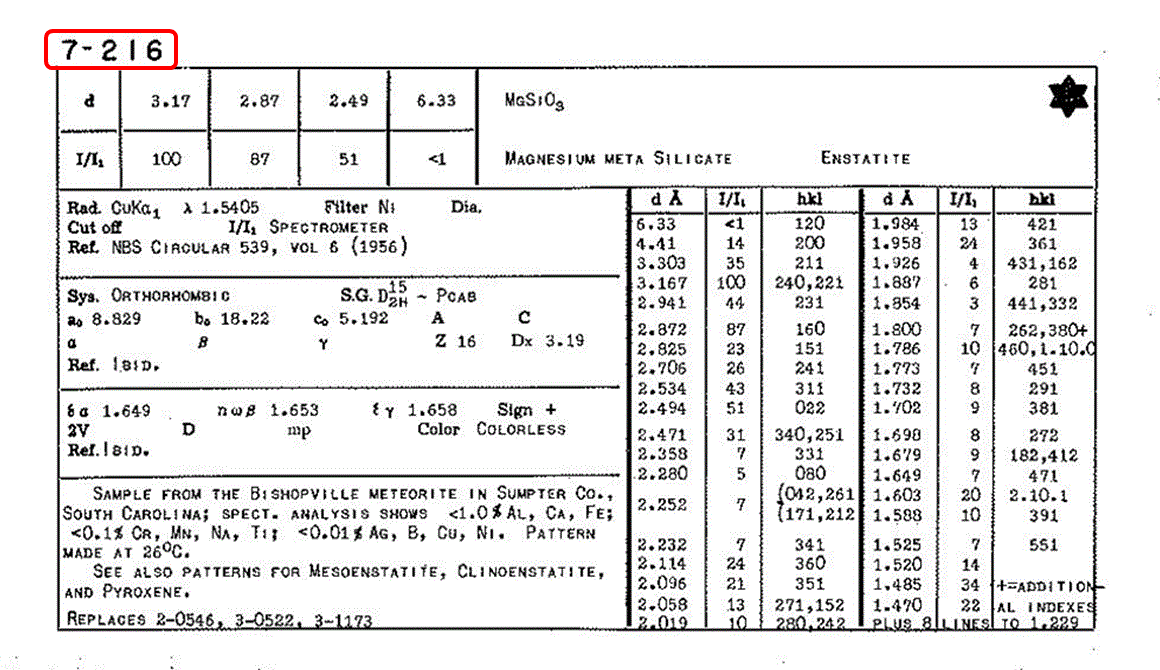
File number for the database entry is set 7, entry 216.
Modern numbering would be database 0, set 7, entry 216 as in "00-007-0216".
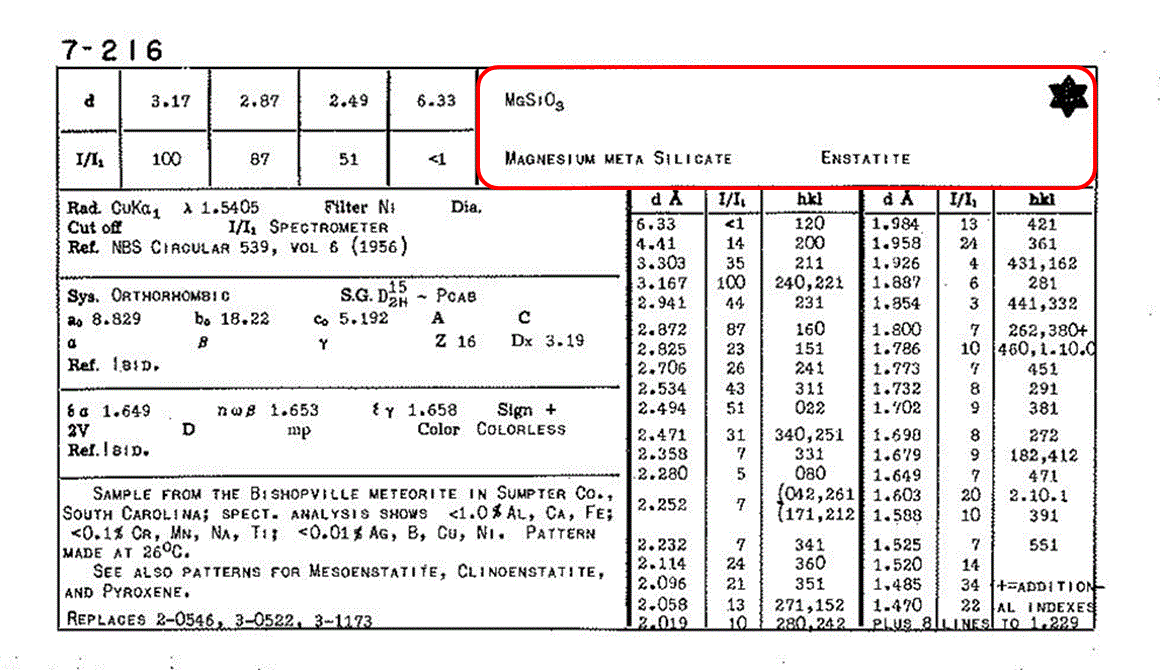
Chemical formula, chemical name, and mineral or common name (if one
exists).
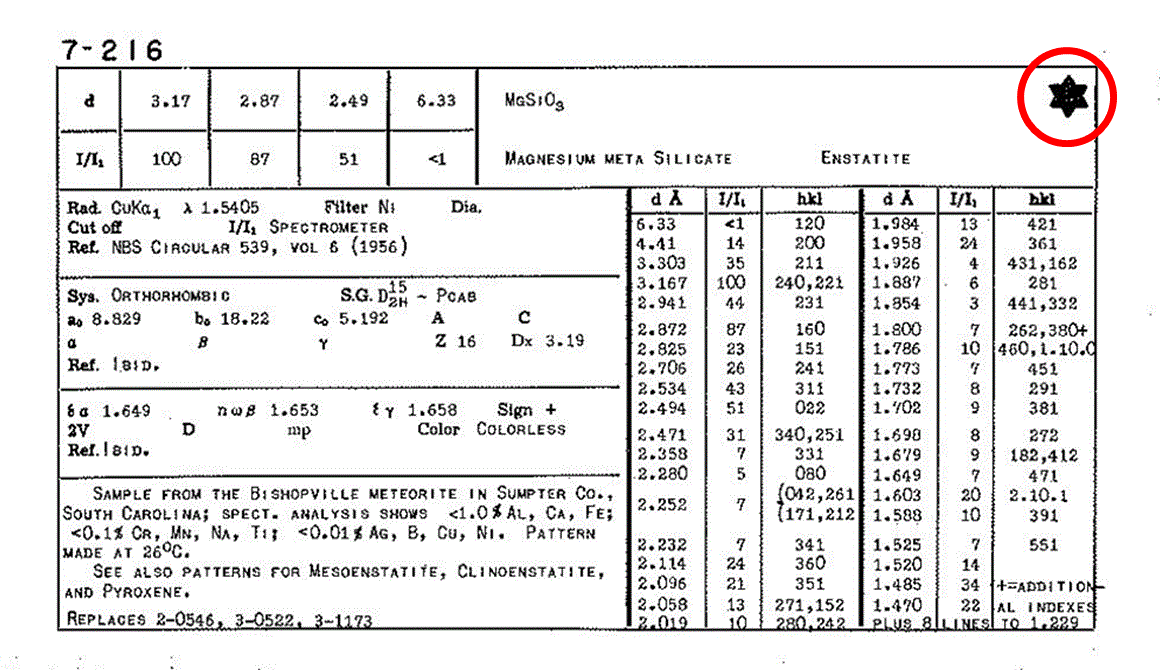
Quality factor of the data entry: a star indicates data of the highest
quality which has been full indexed with hkl values.
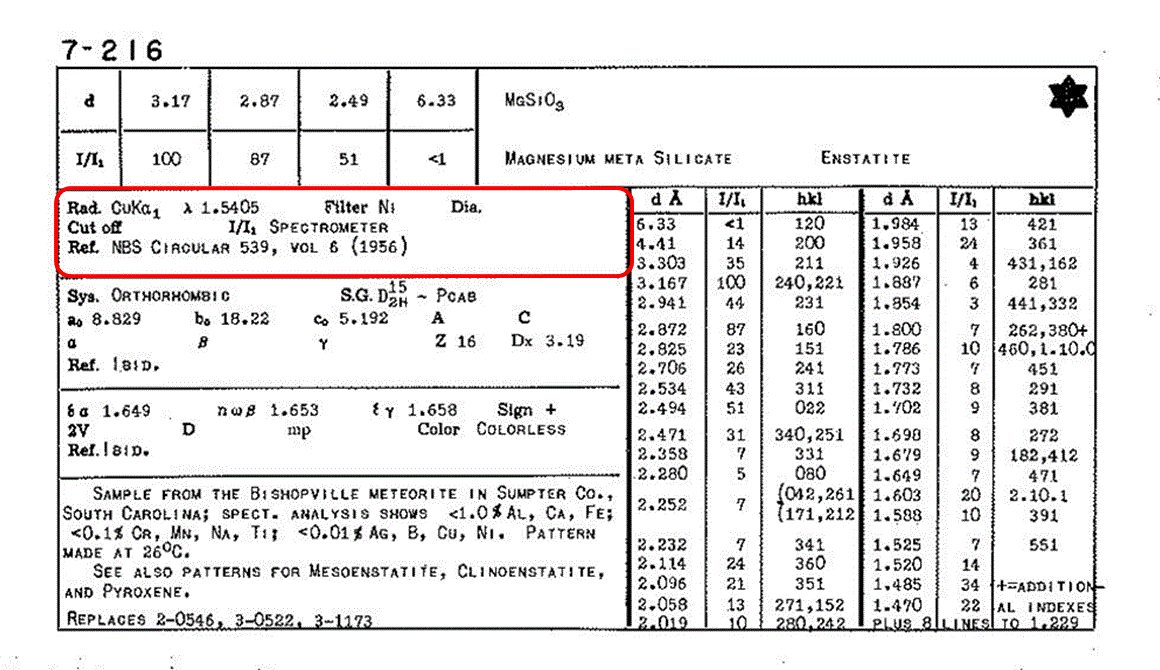
Experimental details on how the data was obtained, e.g. X-ray radiation used
(Cu Kα1) and wavelength (1.5405 Å)
and publication information, etc.
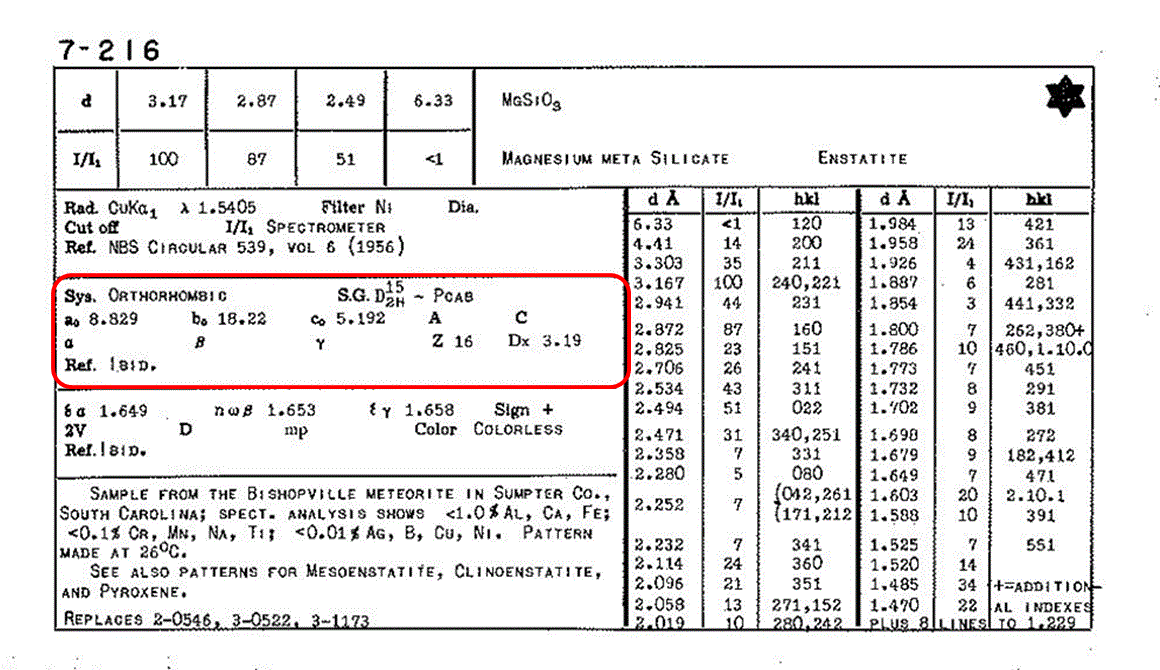
Crystallographic information for this compound, e.g. crystal system,
lattice parameters, no. formula units per unit cell,
calculated density Dx, ratio of lattice
parameters A (=a/b) and
C (=c/b).
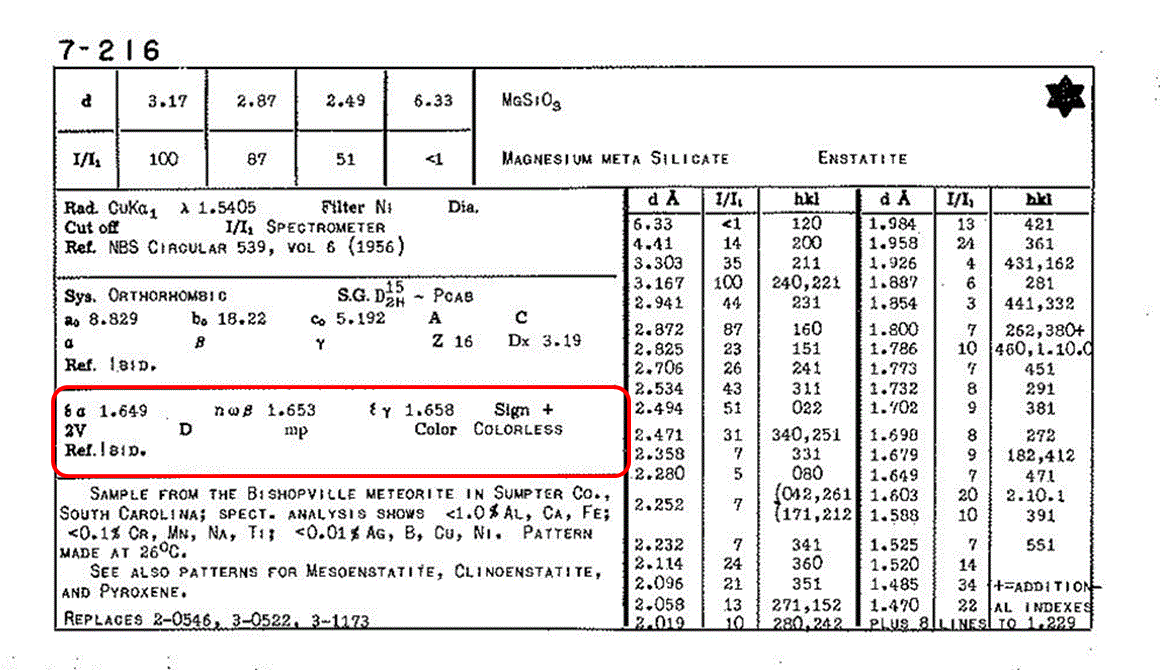
Physical properties (e.g. melting point, optical refraction indices,
and colour) of the material when known, and further references
if applicable (or ibid).
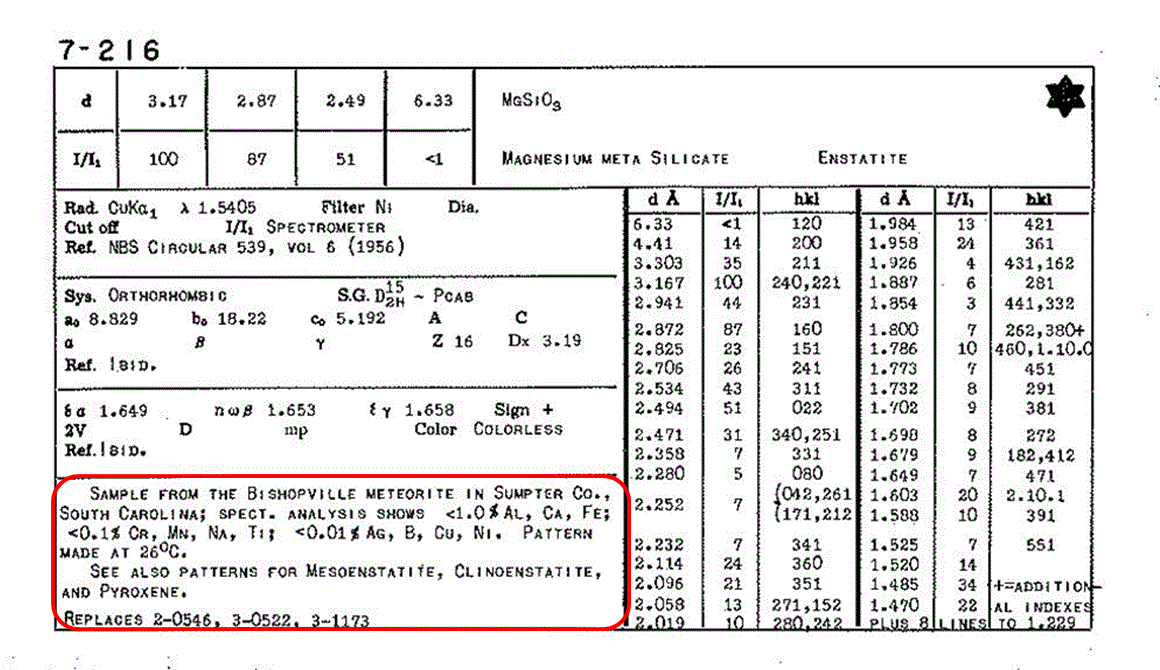
Additional details may be supplied, e.g. the sample source, its synthesis,
its purity, and limits of known impurities, comments on other known
phases, and references to related databases.
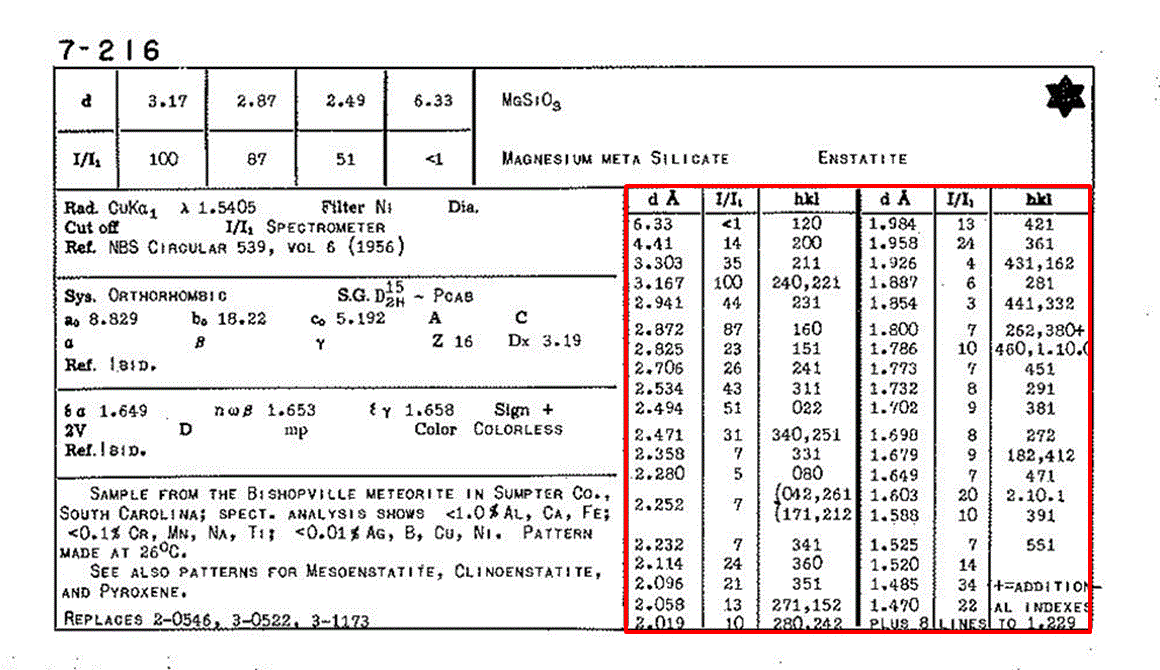
The powder X-ray diffraction data is shown here in the form of
"stick" information, i.e.
d-spacings (from high to low value),
relative intensities (I/I1 as
a percentage), and peak index values hkl if the pattern is indexed.
This is equivalent to the "fingerprint" for the material. Historically,
the data could extend across more than one physical card.
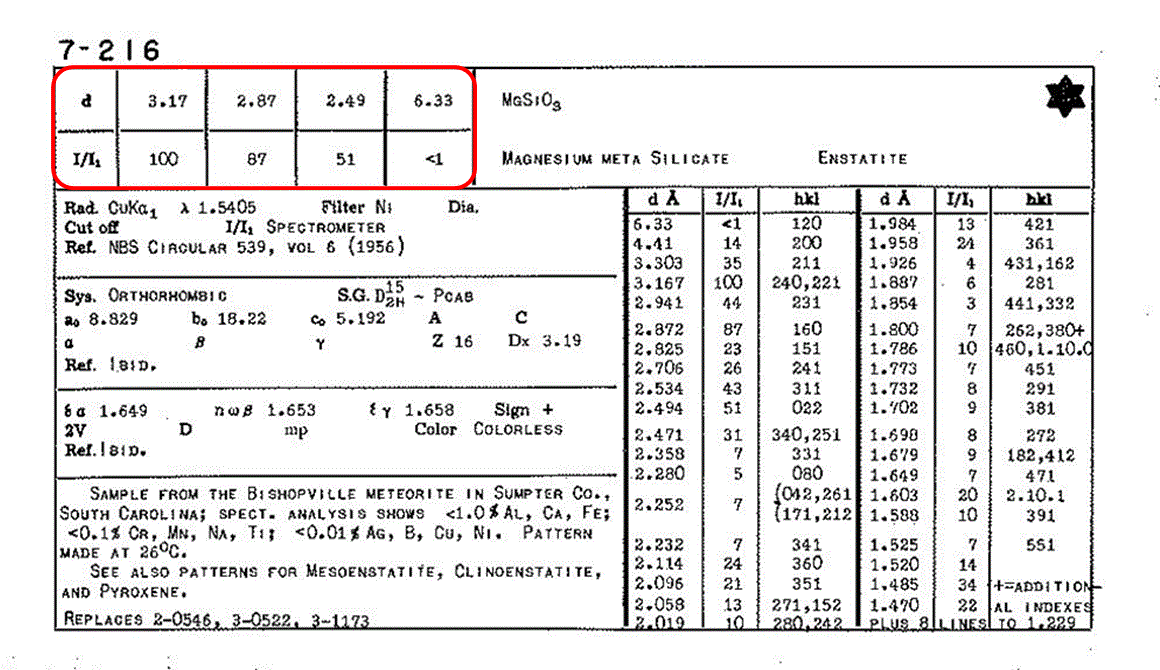
Finally, each card prominently displays the
d-spacings of the 3 most intense peaks in the powder pattern
and their relative intensities. These are used to construct Hanawalt
"Search-Match" tables.
The final item in the top-lefthand section specifies the value of the largest observed
d-spacing for this material, which is also useful for "Search-Match".
These values can be computer generated from the data now that it is stored
digitally.
![]() Card image used with permission for teaching purposes from the
International Centre for Diffraction Data.
Card image used with permission for teaching purposes from the
International Centre for Diffraction Data.
|
|
|